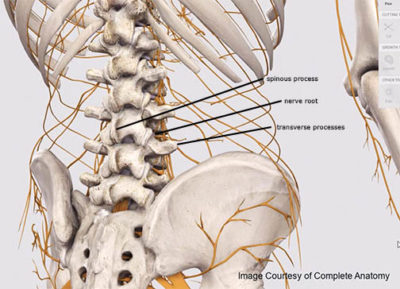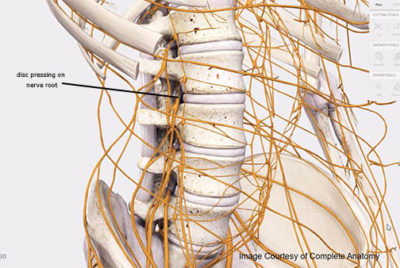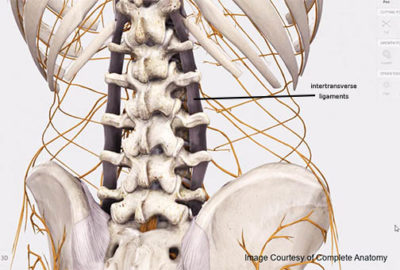Is It Safe to Work on Someone With a Herniated Disc?
- Whitney Lowe
This post is also in a video clip on YouTube if you would like to watch it there.
Today’s post comes from a reader who sent me a note inquiring about whether or not it was safe to work on somebody with a herniated disc. This is a question I get a good bit, and there’s a number of things that we want to take into consideration that would make that determination of whether it’s safe or not. We’ll look at some of the anatomical structures, where they’re located, and what might be particular precautions. The other thing that is going to be very important is applying good assessment processes that help determine the condition’s severity. Determining what kind of motions aggravate the symptoms from that disc, or if, in fact, there really is disc pressure that’s producing them to begin with. So let’s take a look at some of those key clinical factors here that make a determination of whether or not it might be safe to do that in our treatments.
If you come take a look at the lumbar spine, where the nerve roots are located, we can see the transverse and spinous processes to the lateral and posterior side of the spine in Figure 1. The nerve root is also shown there.

Figure 1
Location of nerve root in relation to spinous and transverse processes
This is right where that nerve root exits through the intervertebral foramen. That’s where the disc is pressing on the nerve. In Figure 2 we can see where the disc is going to be pressing on the nerve root.

Figure 2
Location of disc pressure on nerve roots
Now, our key concern is what’s going to happen as we try to work on the muscles at the low back region with that disc pressing on the nerve root. The important consideration here, is to look and see that the transverse processes and the intertransverse ligaments prevent us from being able to press directly on those nerve roots where they’re getting compressed by the intervertebral disc (Figure 3).

Figure 3
Intertransverse Ligaments
So, when you are working on the muscles that overlay that area the transverse process and intertransverse ligaments are going to prevent you from pushing directly on the nerve structures, and further irritating that location of nerve root compression. So, you can’t press directly on that nerve root where the herniation is occurring, but your pressure along the entire spine could move the vertebra a little bit, just sort of shifting it in position, and that might cause the nerve root to get pushed against a protruding disc. So it is possible to make those symptoms worse and to aggravate it, if you put too much pressure in that area that moves the entire spine. But you’re not going to be pressing on something that’s going to press the nerve against the protruding disc. So you can feel pretty confident with that.
So in a nutshell, just be cautious, and in most cases you’re going to be fine working gently and thoroughly through that whole area with all the lumbar musculature. The other thing that’s important is just make sure that we don’t put excessive pressure on those areas or do anything that moves the spine significantly in a direction that aggravates any of those symptoms.
If you want to learn more about disc herniations, all kinds of other low back problems, and many other orthopedic disorders, take a look at our available orthopedic massage courses here at the Academy of Clinical Massage. You’ll learn all about assessment and treatment of a wide variety of pain and injury complaints. There’s lots of people out there who could really use your help, and our goal is to really provide the best educational experiences for you in orthopedic massage, so you can become a highly successful clinical practitioner.

